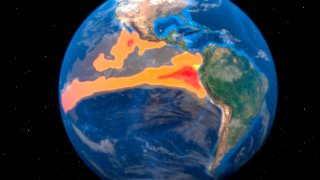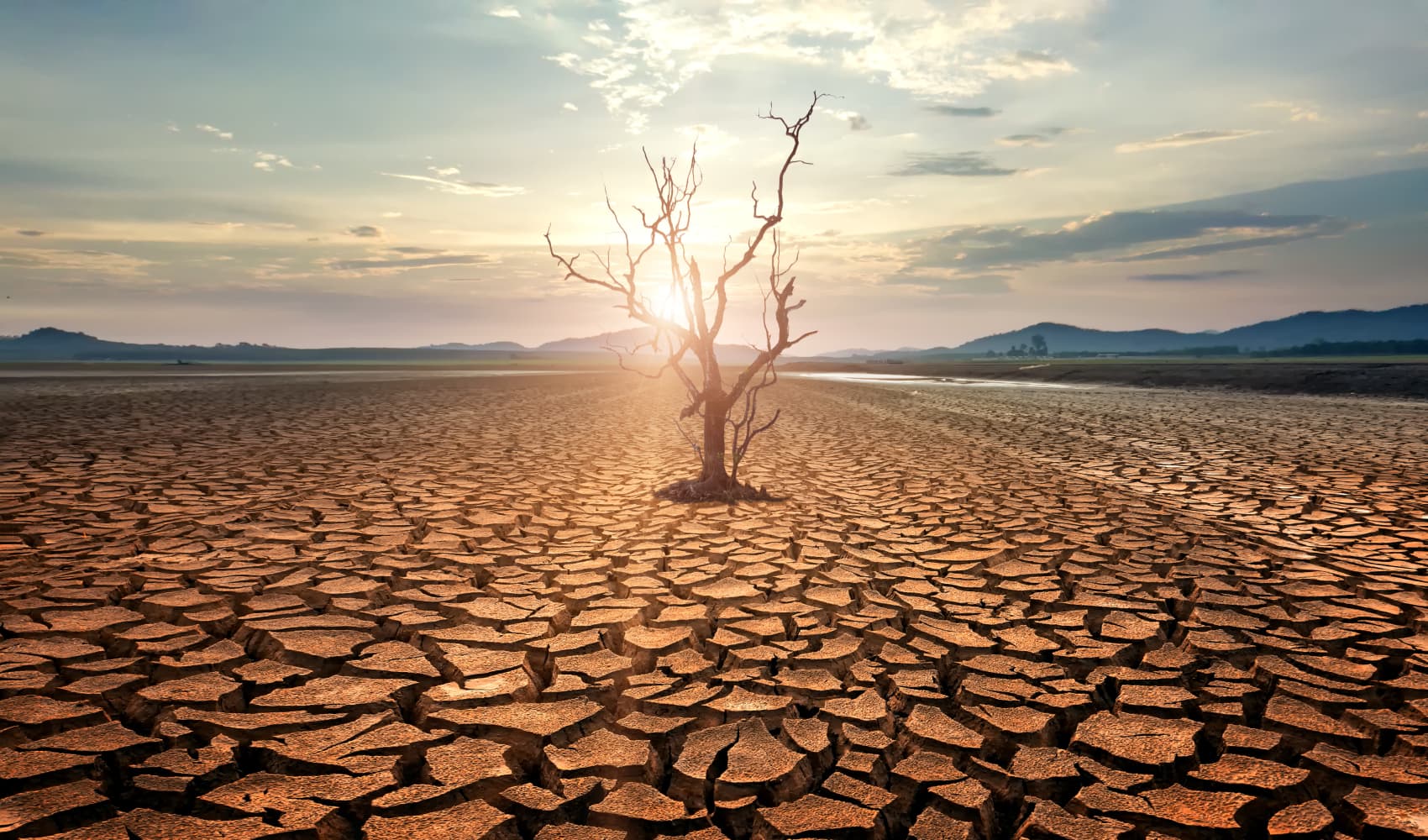
- "El Niño conditions are present and are expected to gradually strengthen into the Northern Hemisphere winter," an advisory from NOAA's Climate Prediction Center published Thursday says.
- El Nino has been expected for months. It's not yet known how major or minor of a weather pattern it will be. The National Oceanic and Atmospheric Administration says there is a 56% chance of a strong El Niño developing by the winter.
- In the United States, El Niño is associated with wetter-than-average conditions from southern California to along the Gulf Coast, drier-than-average conditions in the Pacific Northwest and Ohio Valley, and the potential for warmer than average winter all across the northern part of the U.S.
A climate pattern called El Niño, which has the potential to bring warmer temperatures and more extreme weather conditions, has arrived and is expected to get stronger over the winter, according to the National Oceanic and Atmospheric Administration.
"El Niño conditions are present and are expected to gradually strengthen into the Northern Hemisphere winter," an advisory from NOAA's Climate Prediction Center published Thursday says.
El Niño ("little boy" in Spanish) and La Niña ("little girl" in Spanish") are weather patterns in the Pacific Ocean that can impact weather conditions around the globe.
We're making it easier for you to find stories that matter with our new newsletter — The 4Front. Sign up here and get news that is important for you to your inbox.
In the United States, a moderate to strong El Niño in the fall and winter correlates with wetter-than-average conditions from southern California to the Gulf Coast, and drier-than-average conditions in the Pacific Northwest and Ohio Valley, NOAA says. It also increases the chance of a warmer-than-average winter across the northern part of the U.S.
"We've been anticipating this for a few months and we are still waiting to see how big an event it will be," Gavin A. Schmidt, the director of NASA Goddard Institute for Space Studies, told CNBC. The first advisory watch for El Niño was issued on April 13, according to NOAA.
"El Niño tends to peak around December/January and it could be a minor event or a major one and the impacts that we'll see will depend on that," Schmidt told CNBC.
There is an 84% chance of greater than a moderate strength El Niño and a 56% chance of a strong El Niño developing by the winter, a statement from NOAA says.
Globally, "we'll see more drought and fire in Indonesia/Australia, more flood damage/extreme rainfall in eastern South America," Schmidt told CNBC.
Money Report
Regions that may see higher temperatures run from from the tropic of Cancer to 60 degrees north of Earth's equator, a band which includes the U.S. and most of Eurasia, Schmidt told CNBC. While these regions may see warmer temperatures, Schmidt was careful to point out that El Niño does not guarantee a heat record in any region.
El Niño may to "give a boost" to global temperature averages in 2024, but it will probably not be enough to see more than 1.5 degrees Celsius increase in average global temperatures, Schmidt told CNBC.
It is "still unclear" how climate change impacts El Niño, Schmidt told CNBC.
While the exact connection between climate change and El Niño is not yet known, El Niño does exacerbate the conditions that climate change is already causing on a regional basis, Schmidt told CNBC.
Normal weather patterns blow the trade winds west along the equator. In an El Niño weather pattern, the trade winds weaken and warm water gets pushed to the east, toward the west coast of the Americas. The warmer waters move the Pacific jet stream, which is a current of air flowing from west to east around the globe, to the south, making northern areas of U.S. and Canada drier and warmer than usual. In the U.S. Gulf Coast states, this change in weather patterns are wetter and tend to see more flooding, according to NOAA.
During La Niña, trade winds are stronger than normal and more warm water gets pushed towards Asia. This pushes the jet stream to the north and leads to drought in the southern U.S. and heavy rains and flooding in the Pacific Northwest and Canada, according to NOAA.






